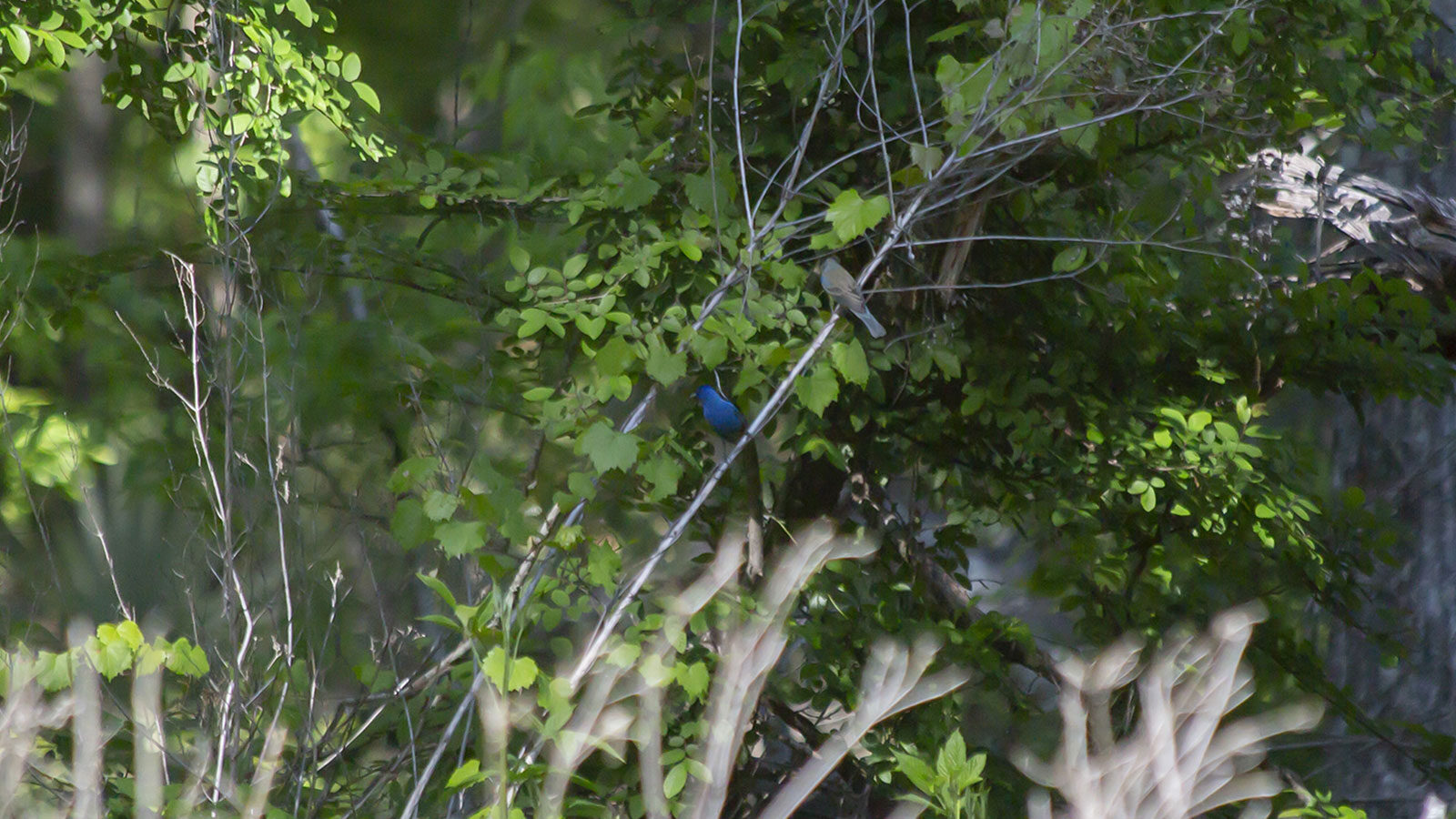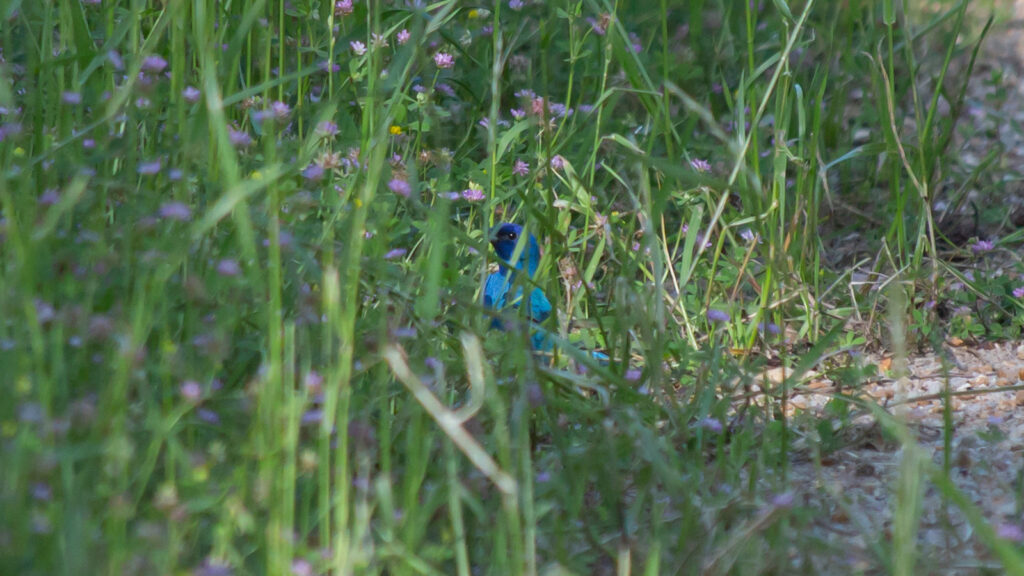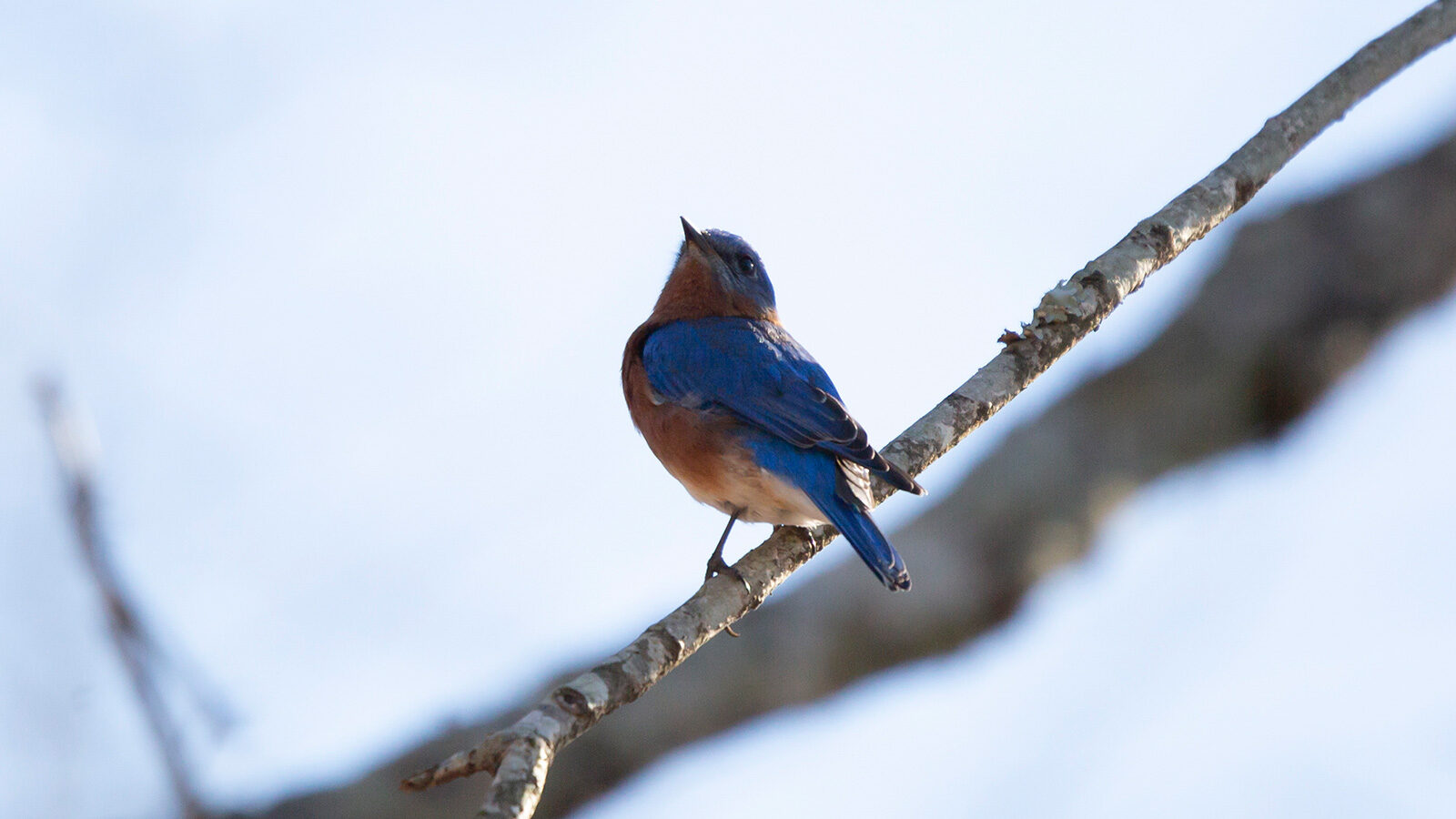
Did you know that indigo buntings use the stars in the night sky for navigation?
Indigo Buntings
at
a Glance

Key Features:
Female indigo buntings are brown with blue streaks on their chests and blue tails or wings. Males are bright blue.
Least Concern - Population Decreasing
Habitat:
Forest edges, fields, grasslands, and along streams and rivers
nesting habits:
Indigo buntings build cup-shaped nests out of bark, grass, hair, eaves, roots, stems, and thistle down hidden in vegetation.
seasons indigo buntings are active in our area:
Summer
Diet:
Berries, buds, seeds, and insects
hunting Behavior:
Indigo buntings forage on the ground and in trees.
Commonly Confused With:
Blue Grosbeaks, Eastern Bluebirds, and Painted Buntings

Male indigo buntings are often confused with male blue grosbeaks because both are blue birds. Male indigo buntings are smaller with thinner beaks. Male grosbeaks are a deeper blue than male indigo buntings.

Male indigo buntings are often confused with male eastern bluebirds because both are blue birds. Male eastern bluebirds have rusty throats and chests.